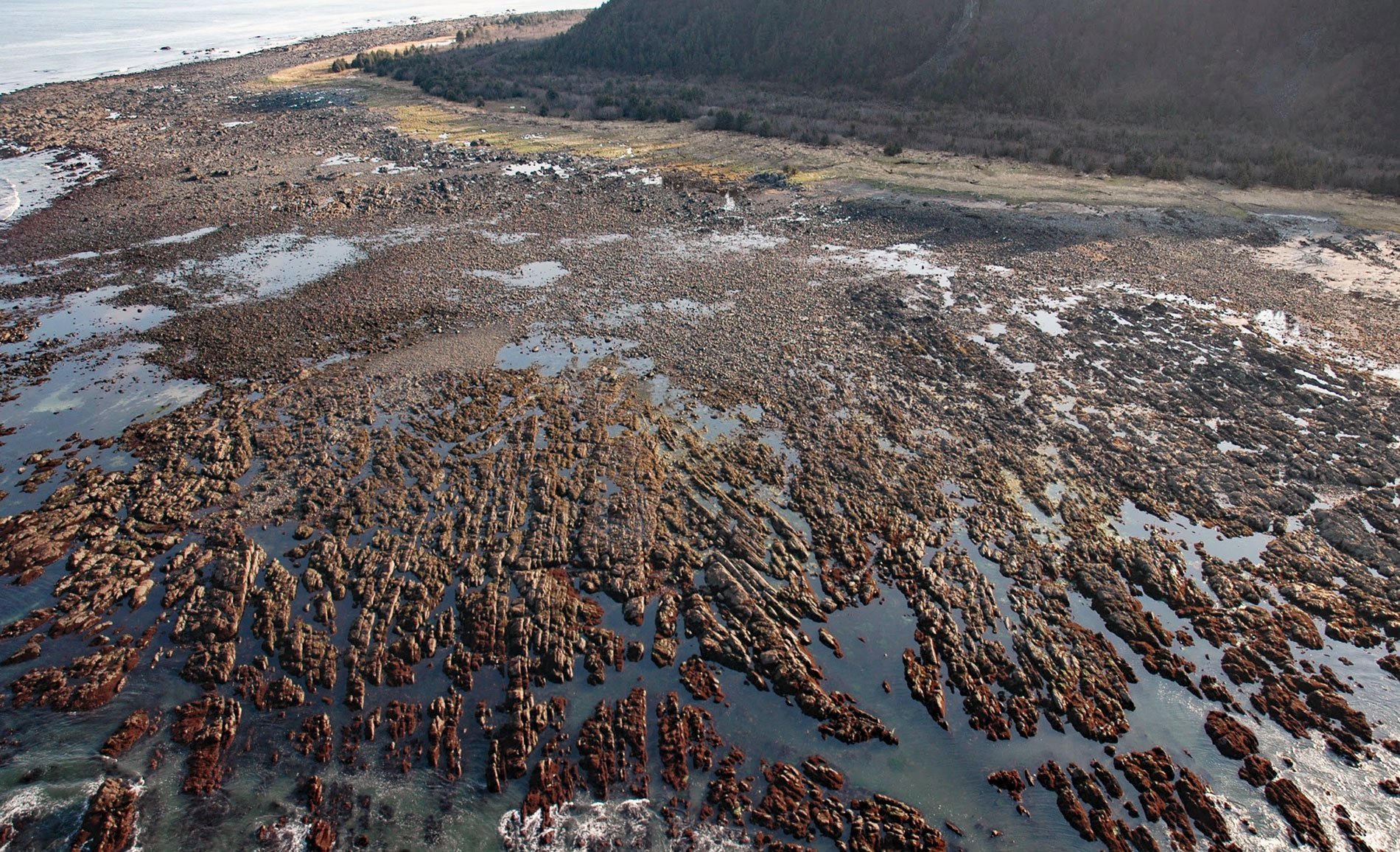Cape Cleare is a headland on the southwest end of Montague Island, at the entrance to Montague Strait that leads to Prince William Sound, about 60 miles (97 km) southeast of Seward, Alaska. The cape was named by Captain Nathaniel Portlock in 1787. In 1791, Captain Alessandro Malaspina called it “Cabo Serena” reputedly because it was sighted on a beautiful day.
On March 27, 1964, a subduction zone earthquake occurred, with an epicenter in Prince William Sound, caused by the oceanic Pacific plate sinking under the continental North American plate. The resulting magnitude 9.2 earthquake remains the most powerful recorded in North America. The fault responsible was the Aleutian Megathrust, a reverse fault caused by a compressional force. Vertical displacement of up to 38 feet (11.5 m) occurred, affecting an area of 100,000 square miles (260,000 sq km).
The megathrust fault beneath Prince William Sound is the contact between the subducting Yakutat terrane and the overlying accretionary Prince William terrane. West of Montague Island, the subducting Yakutat terrane is absent and the Pacific Plate subducts directly beneath the North American plate. The region of highest moment release during the earthquake was centered beneath the southwest end of Montague Island. The seafloor at Cape Cleare was uplifted about 33 feet (10 m). The very gently sloping flat rocky surface now exposed at low tide is about 0.3 miles (0.5 km) wide. The wave eroded platform was below sea level before the earthquake. Read more here and here. Explore more of Cape Cleare here:

